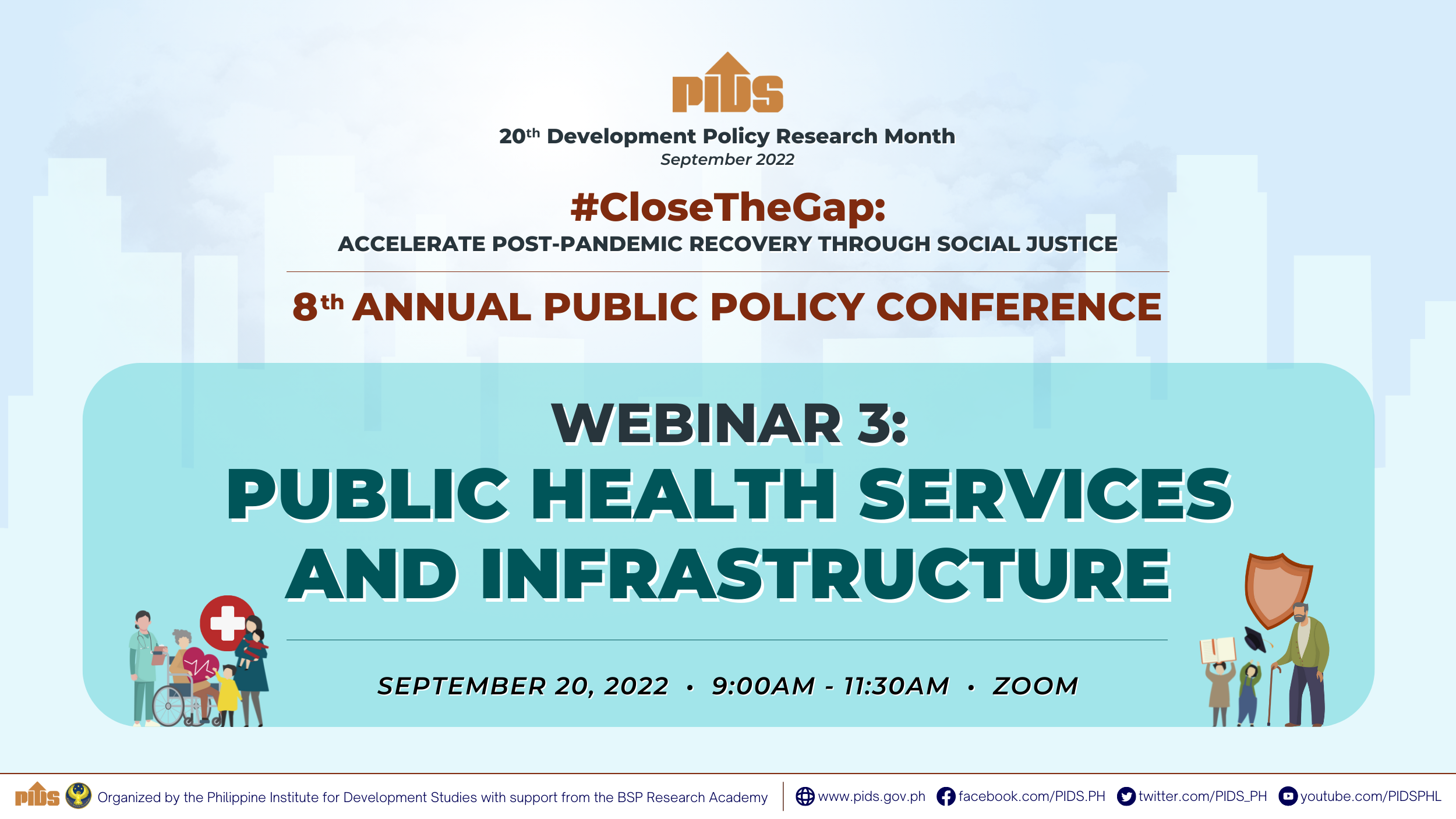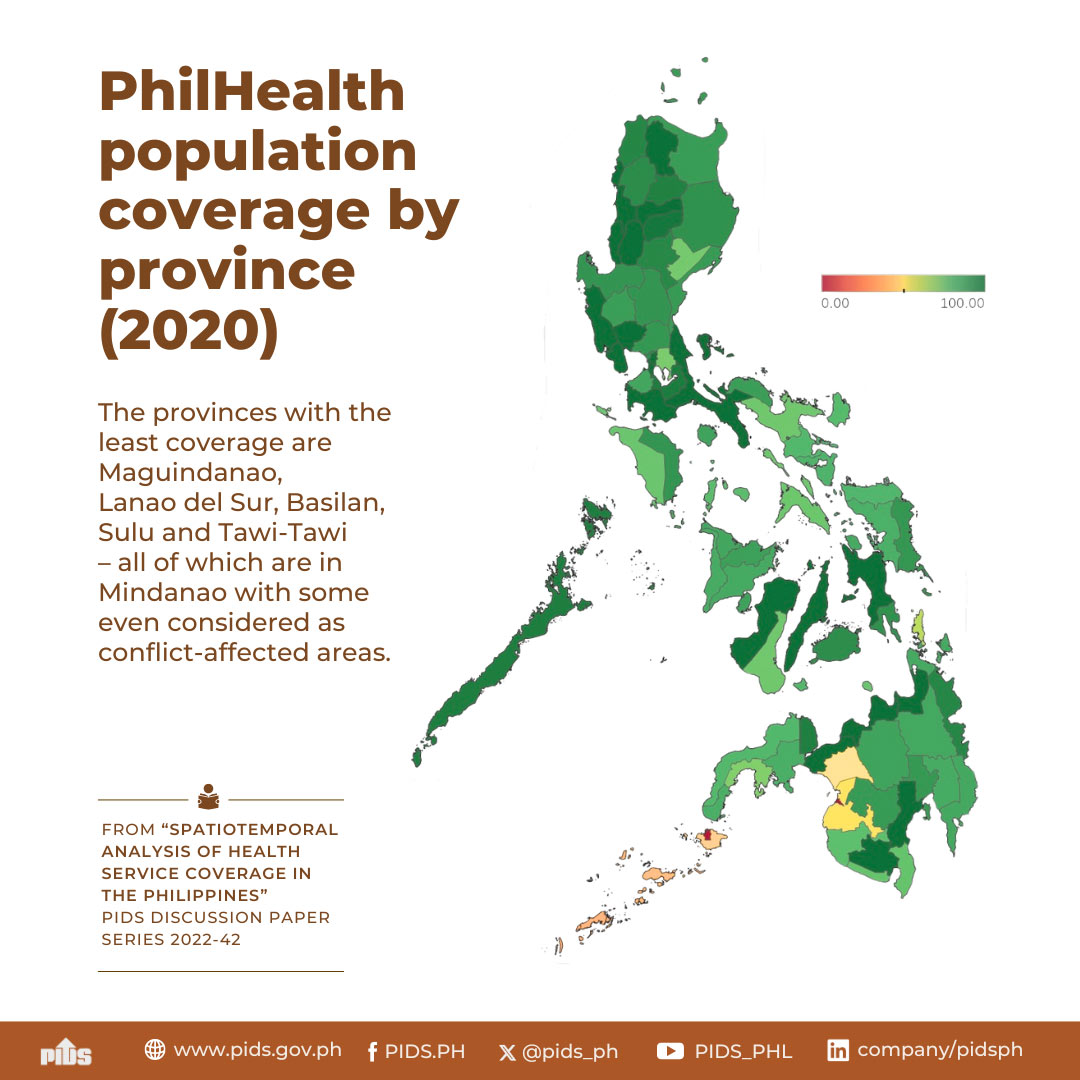
Women from more vibrant local economies have greater access to antenatal care services.
This was according to Michael Abrigo, a research fellow at the Philippine Institute for Development Studies (PIDS), who presented his study titled “Devolution of Health Services, Fiscal Decentralization, and Antenatal Care in the Philippines” during a public seminar organized by the Institute.
Based on the study, Abrigo mentioned that utilization of antenatal care services has generally increased for the last 25 years, or since the early years of the implementation of the Local Government Code of 1991.
“In 1993, about 85 percent of pregnant women visited a skilled provider for antenatal care. Twenty-five years later, [it went up to] 94 percent. So that's an increase of [about] 10-percentage points,” Abrigo said.
Meanwhile, the number of pregnant women who visited antenatal care providers during their first trimester also increased by about 30 percent, from 43 percent in 1993 to 71 percent in 2017. A similar trend was found in terms of frequency, wherein the number of pregnant women who visited antenatal care providers more than four times, as recommended by the World Health Organization, increased by over 30 percent, from 55 percent in 1993 to 87 percent in 2017.
Abrigo, however, clarified that these increases varied and there was a “large disparity” in terms of wealth, education, residence, and even birth order. In addition, the kind of service that pregnant women received also varied depending on the services of their antenatal care providers. For instance, not all patients had their blood pressure, weight, and height measured, or their urine and blood sample taken.
His study also examined whether the increase in local government incomes under a decentralized setting can improve the utilization of antenatal care service or not.
“Alam nating lahat na kapag ang isang munisipyo [ay] naging city, meron siyang access sa Internal Revenue Allotment na mas malaki, so that would eventually lead to higher income,” he said, adding that this higher income, which can be considered windfall income or transfers, would eventually lead to higher expenditure.
However, using four indicators, namely, antenatal care visits by skilled professional, antenatal care visits in the first trimester, antenatal care visits frequency, and delivery by skilled birth attendant, Abrigo found that “greater national-to-local transfers (in response to city ratification) do not necessarily translate to better health outcomes,” at least for antenatal care.
He noted that while the incomes of municipalities-turned-cities increase through the national government transfers, these are not spent on health but on general public services, education, and economic services.
“Is it a bad thing? Maybe it is bad for health, but maybe not in general. Maybe, this actually reflects that decentralization is working…na ito yung mga kailangan nila sa lugar nila kaya siguro dito napunta,” Abrigo explained.
Given these results, Abrigo said it is important to develop the localities to improve income from local sources instead of relying on national transfers. ###
This was according to Michael Abrigo, a research fellow at the Philippine Institute for Development Studies (PIDS), who presented his study titled “Devolution of Health Services, Fiscal Decentralization, and Antenatal Care in the Philippines” during a public seminar organized by the Institute.
Based on the study, Abrigo mentioned that utilization of antenatal care services has generally increased for the last 25 years, or since the early years of the implementation of the Local Government Code of 1991.
“In 1993, about 85 percent of pregnant women visited a skilled provider for antenatal care. Twenty-five years later, [it went up to] 94 percent. So that's an increase of [about] 10-percentage points,” Abrigo said.
Meanwhile, the number of pregnant women who visited antenatal care providers during their first trimester also increased by about 30 percent, from 43 percent in 1993 to 71 percent in 2017. A similar trend was found in terms of frequency, wherein the number of pregnant women who visited antenatal care providers more than four times, as recommended by the World Health Organization, increased by over 30 percent, from 55 percent in 1993 to 87 percent in 2017.
Abrigo, however, clarified that these increases varied and there was a “large disparity” in terms of wealth, education, residence, and even birth order. In addition, the kind of service that pregnant women received also varied depending on the services of their antenatal care providers. For instance, not all patients had their blood pressure, weight, and height measured, or their urine and blood sample taken.
His study also examined whether the increase in local government incomes under a decentralized setting can improve the utilization of antenatal care service or not.
“Alam nating lahat na kapag ang isang munisipyo [ay] naging city, meron siyang access sa Internal Revenue Allotment na mas malaki, so that would eventually lead to higher income,” he said, adding that this higher income, which can be considered windfall income or transfers, would eventually lead to higher expenditure.
However, using four indicators, namely, antenatal care visits by skilled professional, antenatal care visits in the first trimester, antenatal care visits frequency, and delivery by skilled birth attendant, Abrigo found that “greater national-to-local transfers (in response to city ratification) do not necessarily translate to better health outcomes,” at least for antenatal care.
He noted that while the incomes of municipalities-turned-cities increase through the national government transfers, these are not spent on health but on general public services, education, and economic services.
“Is it a bad thing? Maybe it is bad for health, but maybe not in general. Maybe, this actually reflects that decentralization is working…na ito yung mga kailangan nila sa lugar nila kaya siguro dito napunta,” Abrigo explained.
Given these results, Abrigo said it is important to develop the localities to improve income from local sources instead of relying on national transfers. ###












